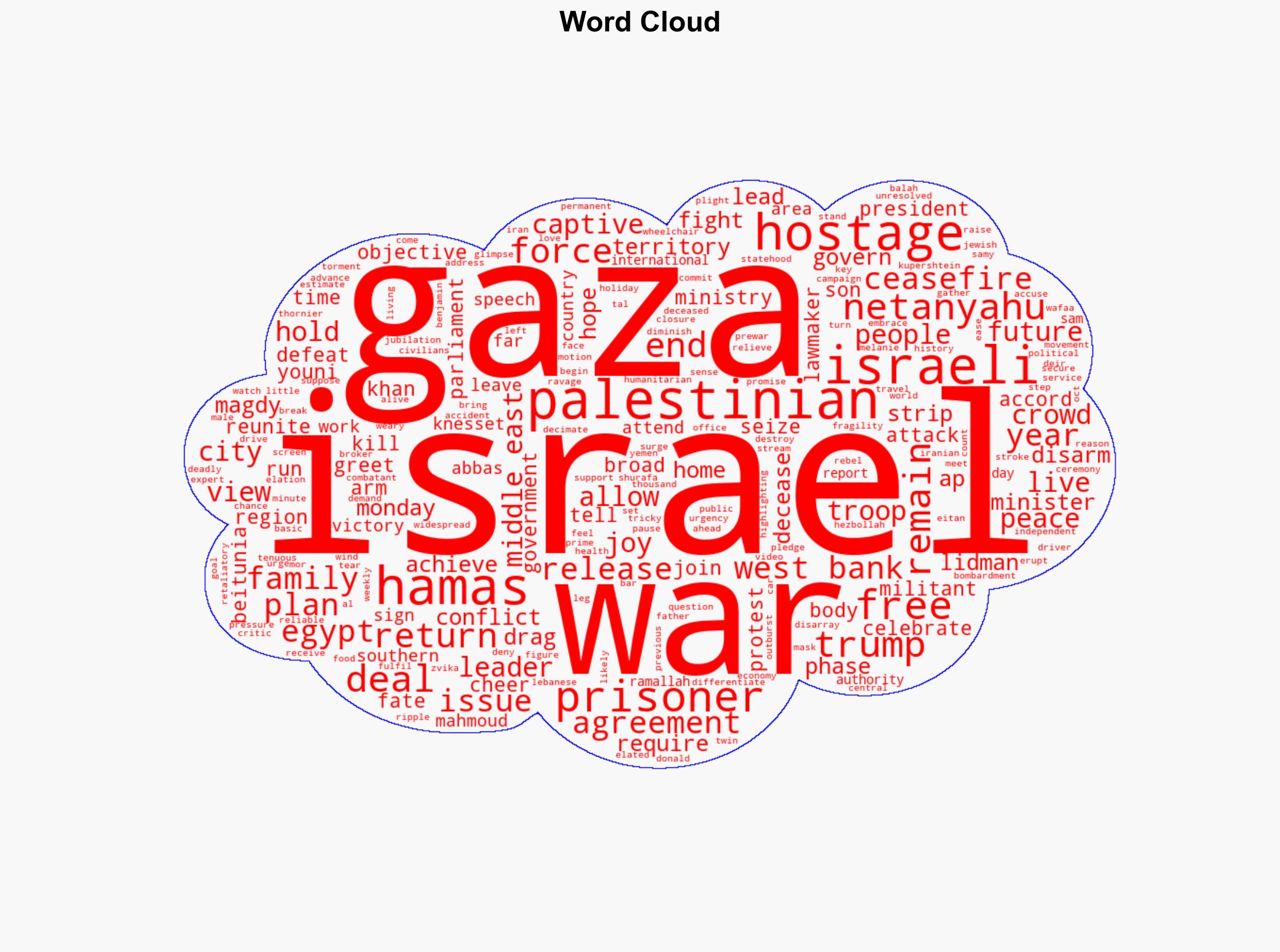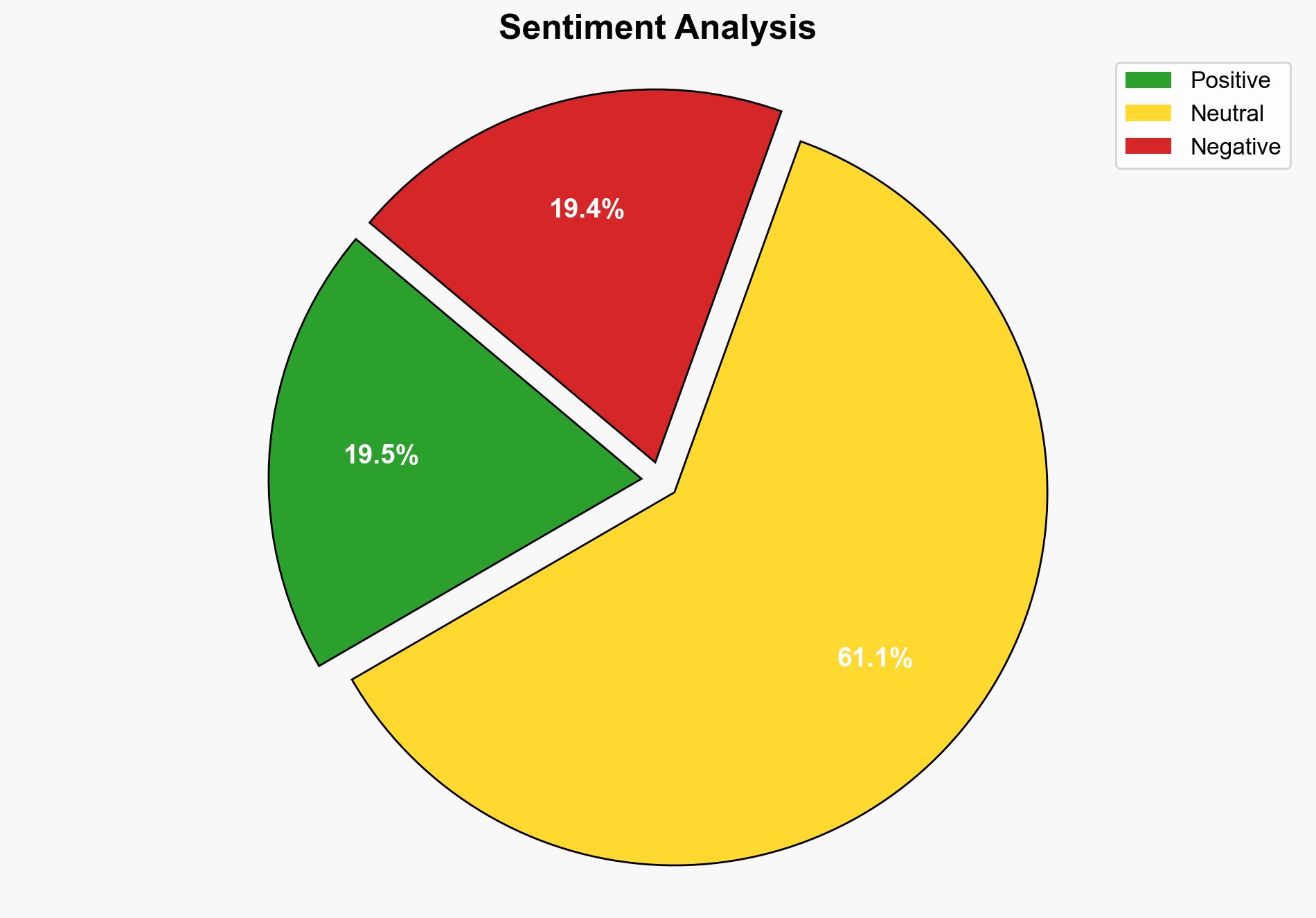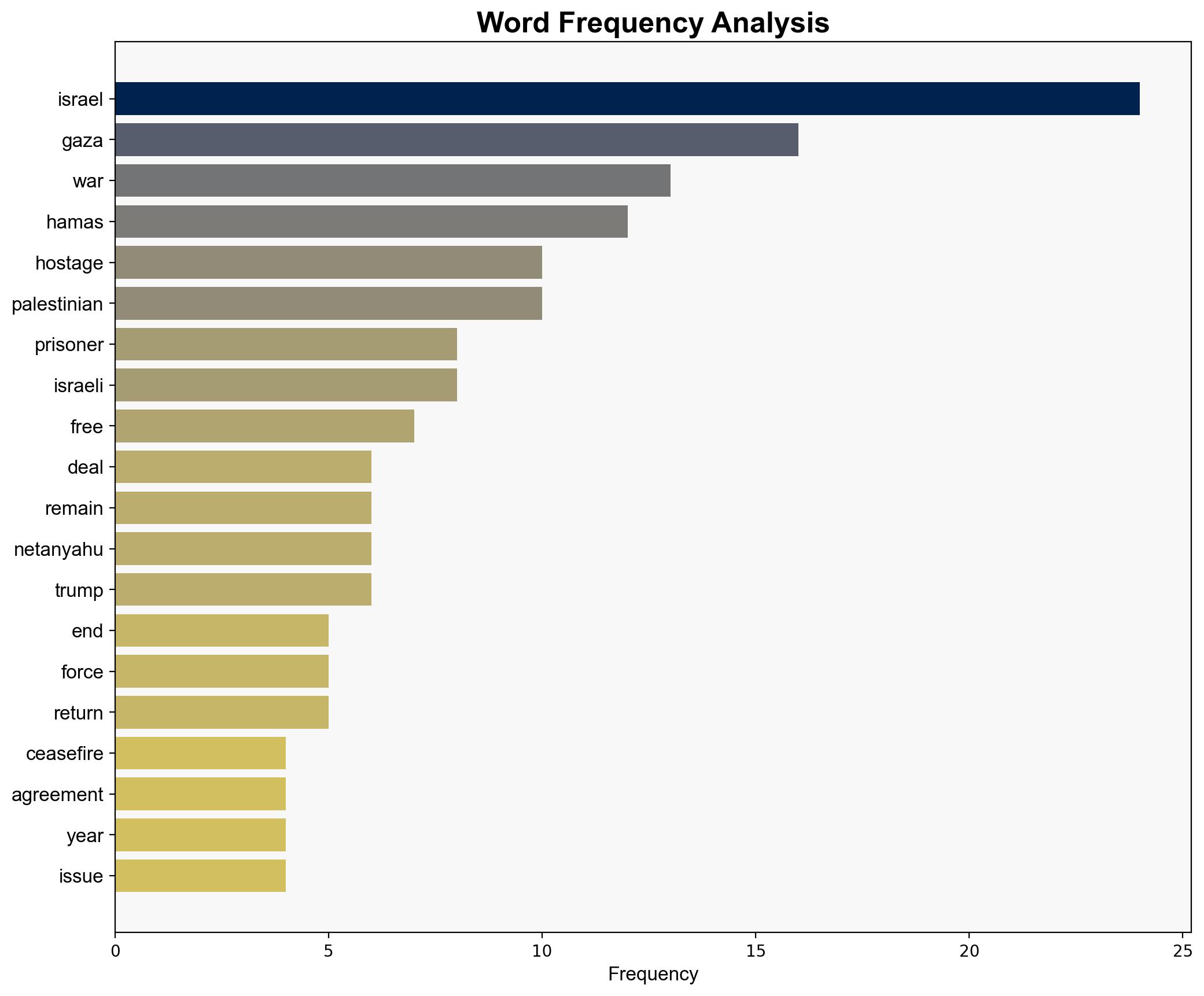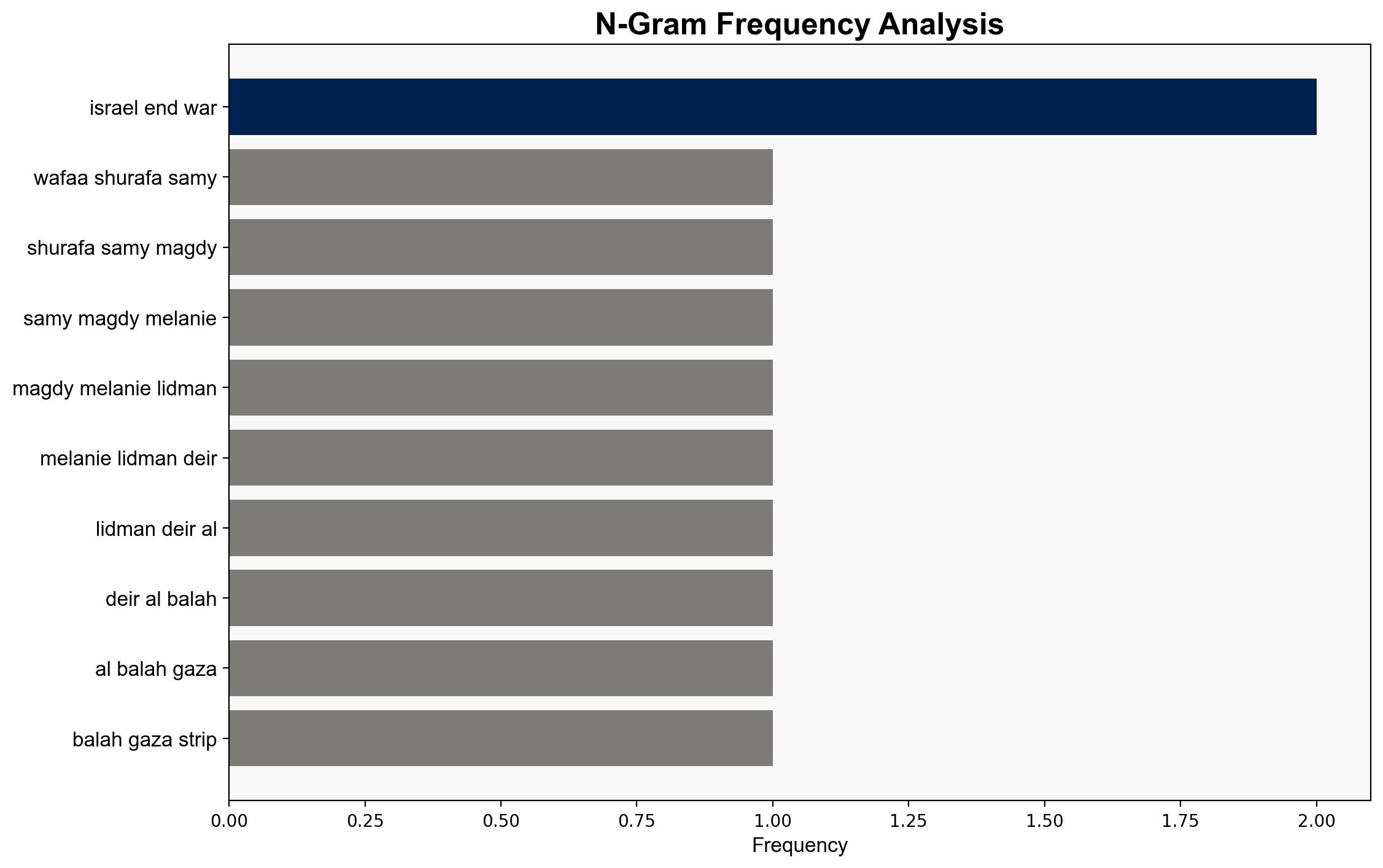Israeli military says 7 living hostages freed by Hamas are now in Israeli custody – Boston Herald
Published on: 2025-10-13
Intelligence Report: Israeli military says 7 living hostages freed by Hamas are now in Israeli custody – Boston Herald
1. BLUF (Bottom Line Up Front)
The release of hostages by Hamas and their transfer to Israeli custody marks a significant development in the ongoing conflict between Israel and Hamas. The most supported hypothesis is that this event is part of a broader strategic negotiation aimed at achieving a temporary ceasefire, with a moderate confidence level. Recommended action includes leveraging this development to push for more comprehensive peace talks while preparing for potential setbacks.
2. Competing Hypotheses
1. **Hypothesis A**: The release of hostages is a strategic move by Hamas to gain leverage in negotiations and secure concessions from Israel, such as increased humanitarian aid and prisoner releases.
2. **Hypothesis B**: The release is primarily a goodwill gesture by Hamas to de-escalate tensions and pave the way for a longer-term ceasefire agreement, possibly influenced by external pressures from regional actors.
Using ACH 2.0, Hypothesis A is better supported due to the historical context of hostage exchanges being used as negotiation tools and the immediate impact on humanitarian aid flows. Hypothesis B is less supported as it assumes a sudden shift in Hamas’s strategic objectives without clear evidence of external pressures strong enough to prompt such a change.
3. Key Assumptions and Red Flags
– **Assumptions**: Both hypotheses assume rational actor behavior by Hamas and Israel, and that both parties are willing to negotiate under current conditions.
– **Red Flags**: The lack of detailed information on the terms of the ceasefire and the absence of independent verification of the hostages’ condition raise concerns about the completeness of the intelligence.
– **Cognitive Bias**: Confirmation bias may affect the interpretation of Hamas’s intentions, given past behaviors.
4. Implications and Strategic Risks
– **Geopolitical**: The release could either stabilize or destabilize the region, depending on subsequent actions by both parties.
– **Escalation Scenarios**: If negotiations fail, there could be a rapid return to hostilities, potentially involving regional actors like Hezbollah or Iran.
– **Economic and Humanitarian**: Increased aid to Gaza may alleviate immediate humanitarian needs but could also be perceived as rewarding Hamas’s tactics, influencing future negotiations.
5. Recommendations and Outlook
- Encourage diplomatic engagement to solidify the ceasefire and address underlying issues, such as disarmament and statehood.
- Monitor regional actors’ responses to the ceasefire for signs of support or opposition.
- Scenario Projections:
- Best Case: A sustained ceasefire leads to broader peace negotiations.
- Worst Case: Breakdown of talks results in renewed conflict.
- Most Likely: Temporary calm with sporadic violence as negotiations continue.
6. Key Individuals and Entities
– Benjamin Netanyahu
– Donald Trump
– Mahmoud Fayez
– Zvika Mor
7. Thematic Tags
national security threats, counter-terrorism, regional focus, hostage negotiation, peace process





